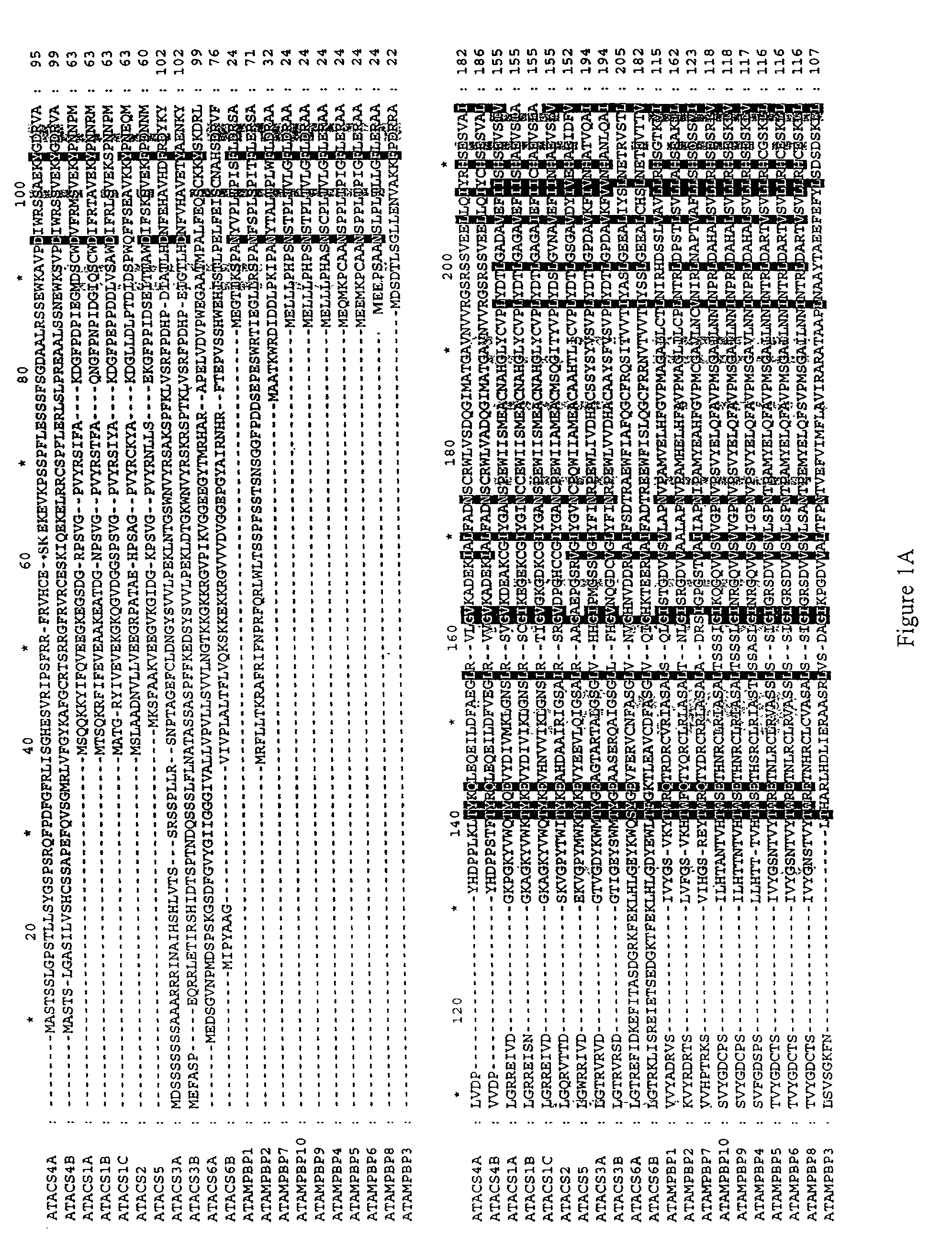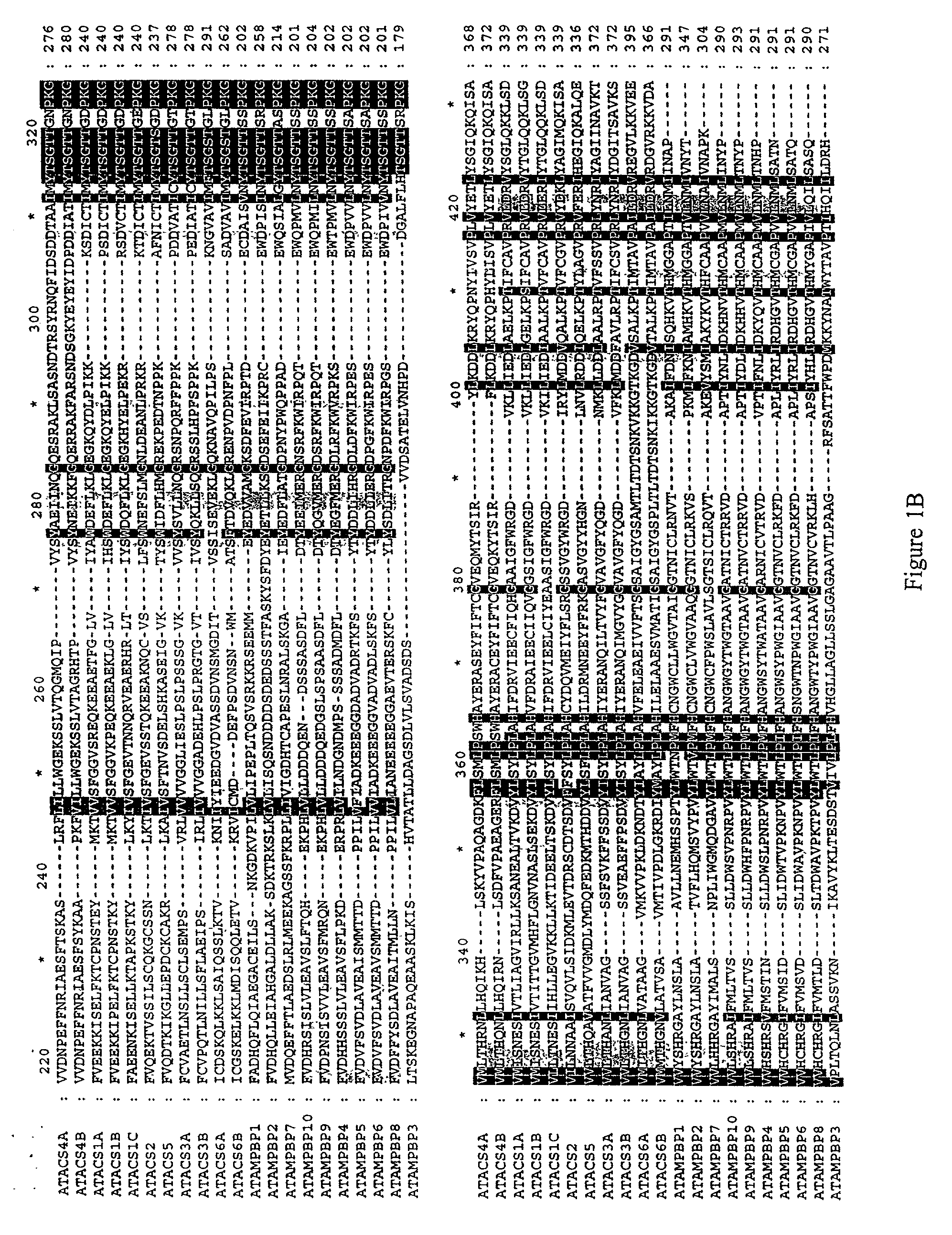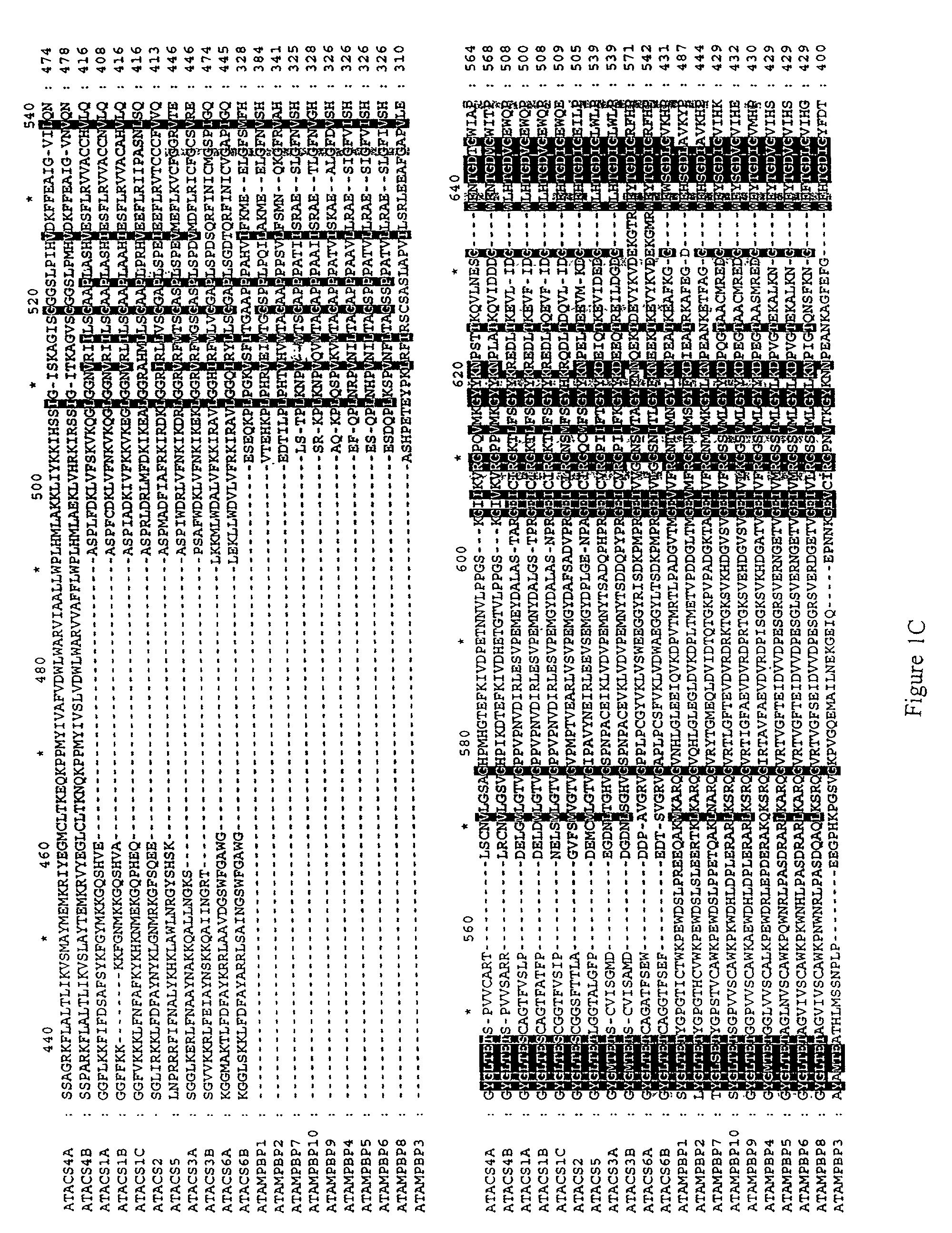Plant acyl-CoA synthetases
- Summary
- Abstract
- Description
- Claims
- Application Information
AI Technical Summary
Benefits of technology
Problems solved by technology
Method used
Image
Examples
example 1
[0268]This Example describes the procedures utilized to identify and clone the ACS genes of the present invention.
Sequencing and Homology Analysis
[0269]All DNA sequencing was conducted in the Macromolecular Analysis Laboratory at Washington State University using automated sequencing equipment (Applied Biosystems, Foster City, Calif.). Sequences were assembled and modified using the GCG suite of programs (Wisconsin Package Version 10.0, Genetics Computer Group, Madison, Wis.). Database searches were conducted against the AtDB Illustra database (genome-www.standford.edu / Arabidopsis), its successor at The Arabidopsis Information Resource (TAIR) (www.arabidopsis.org), and the Munich Information Center for Protein Sequences Arabidopsis thaliana database (MATDB) (mips.gsf.de / proj / thal / db / search / search_frame.html).
Identification and Cloning of Genes
[0270]Full-length ACS clones were isolated by first screening the EST databases ((Newman et al. (1994) Plant Physiol 106(4): 1241–55) to ident...
example 2
[0299]This Example describes the cloning of ten AMP-BPs. These ten AMP-BPs were selected from a total of fourteen members of AMP-BPs discovered through the grouping of the original 44 genes into subfamilies as determined by phylogenetic relationships among the 44 genes as described above. The methods of sequencing and homology analysis, identification and cloning of genes, and cloning of Arabidopsis genes in E. coli and Saccharomyces cerevisiae are described in Example 1, with additional details provided below.
[0300]Total RNA was isolated from Arabidopsis dry seeds, roots, old stems, young stems, young leaves, old leaves, young stems, old stems, flowers, new siliques, and old siliques. First strand cDNA was prepared from each of these RNA preps with Superscript II reverse transcriptase (Gibco-BRL) as described in the Hieroglyph mRNA Profile Kit (Genomyx). Using gene specific primers designed from the expected start codon and stop codon of each gene (Example 3), the open reading fram...
example 3
[0307]This Example describes primers useful for amplifying full-length ACSs and AMP-BPs and for use in RNAse protection assays.
AtACs1A
[0308](SEQ ID NO: 52) AAGGCGATTCATCTTGAC-AtACS1A gene specific RPA primer[0309](SEQ ID NO: 53) CTGGTACCATGACGCAGCAGAAGAAATAC-5′ yeast vector cloning primer+KpnI restriction site.[0310](SEQ ID NO: 54) CTCTCGAGCTACCCTCTGGAAGCAAATT
AtACs1B[0311](SEQ ID NO: 55) ATGACGTCGCAGAAAAGATTCATCTTTG-5′ start codon cloning primer[0312](SEQ ID NO:56) TTACTGTCCGGAAGCTAGACTTTCCTTTC-3′ stop codon cloning primer
AtACs1C[0313](SEQ ID NO: 57) GAGTCTATCTGCCGAAACC-AtACS1C gene specific RPA primer[0314](SEQ ID NO: 58) ATGGCGACTGGTCGATACATCGTTGAGGTTG-5′ start codon cloning primer[0315](SEQ ID NO: 59) TTACACTCGTAGCTGCACTTCTC-3′ stop codon cloning primer
AtACs2[0316](SEQ ID NO: 60) 6RPA-AACTCAATTACCAATCTCCC[0317](SEQ ID NO: 61) CGCCATGAACACCGAGTCAG-5′ Start codon cloning primer[0318](SEQ ID NO: 62) GAGCCATTCAGAGCTTCGACG-3′ Stop codon cloning primer
AtACs3A[0319](SEQ ID NO: 63) ATCCG...
PUM
| Property | Measurement | Unit |
|---|---|---|
| Nucleic acid sequence | aaaaa | aaaaa |
Abstract
Description
Claims
Application Information
 Login to View More
Login to View More - R&D
- Intellectual Property
- Life Sciences
- Materials
- Tech Scout
- Unparalleled Data Quality
- Higher Quality Content
- 60% Fewer Hallucinations
Browse by: Latest US Patents, China's latest patents, Technical Efficacy Thesaurus, Application Domain, Technology Topic, Popular Technical Reports.
© 2025 PatSnap. All rights reserved.Legal|Privacy policy|Modern Slavery Act Transparency Statement|Sitemap|About US| Contact US: help@patsnap.com



